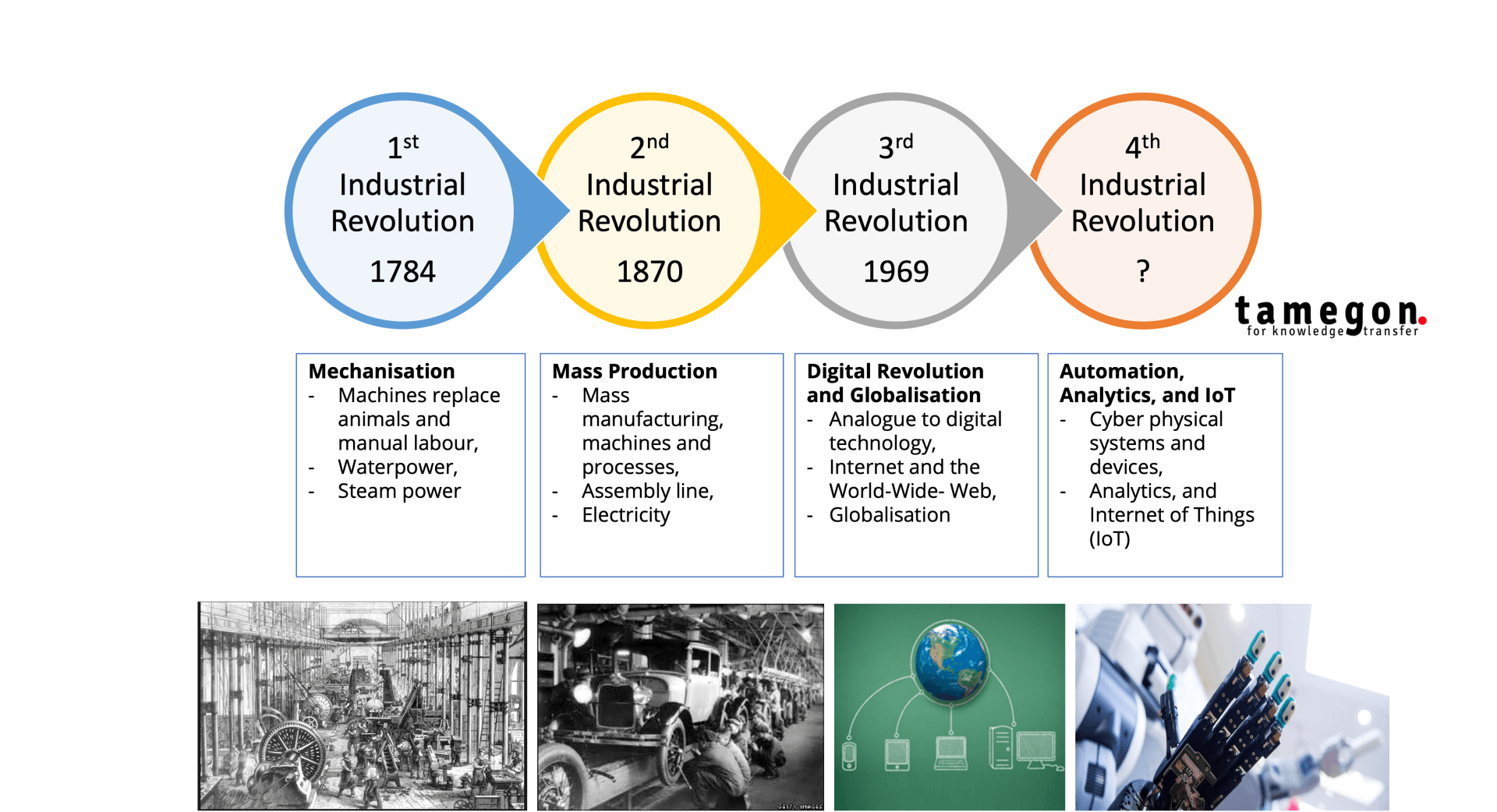What skills will graduates need to succeed in the future job market?
Dr Costas Chryssou
February 14, 2022
tamegon Innovation and Growth Advisory Firm
Building on the third industrial revolution, the fourth industrial revolution based on artificial intelligence, digital, virtual, big data, and robotics presents a great opportunity with the potential to connect billions more people to digital networks, improve the efficiency of organisations, enable disruptive new economic and business models, and even change the way humans exist forever.

For organisations to remain competitive they need to consider how business models will change, what these changes will mean for their internal structures and processes and how to address potential skill-gaps that will be created. In a landscape of rapid and profound change, digital has already transformed our lives with the computerisation of tasks, processes and abundance of tools that empower workers to be more effective. There is currently a lot of discussion about the skills that youth and graduates will need to be equipped with to be able to effectively compete and succeed in the job market of the future. With youth unemployment increasing worldwide (Global Employment Trends for Youth 2020) and anticipated automation of many jobs over the next 15 years, what are the skills that will be most in demand?

Although AI and automation will no doubt transform current occupations and occupational categories, leading to the replacement of some of today's jobs, they will certainly also create new ones requiring graduates to adapt, re-skill and learn how to use new technologies and capitalise on new business models and opportunities.
New and existing technical skills will be required. Understanding of AI, big data, machine learning, coding, cyber security, robotics and software development as well as project management skills will be in high demand.
Soft skills - competencies and positive attitudes that help employees to successfully interact and collaborate with others in the workplace - will receive more focus. These interpersonal skills, which can include communication and listening skills, conflict resolution, collaboration and team working, openness to feedback, problem-solving skills and creative thinking, will underpin future employment. While tasks and processes will continue to be automated, these soft skills cannot be replicated with technology and employers will always be looking to fill their leadership positions with appropriate talent.
Entrepreneurial skills and attitudes will also underpin opportunities that the fourth industrial revolution is creating, providing unique prospects for youth worldwide to alleviate barriers to entry into traditional employment as well as to capitalise on local knowledge and resources and create employment for others.
Although traditionally, education systems were the primary pedagogues tasked with preparing young people for the workforce, there is currently a broad consensus that there is a gap between the skills that graduates have and the skills that employers need; this disparity will only be exacerbated due to the speed that digital transformation will continue to evolve. To bridge this gap many approaches have been taken worldwide, from apprenticeships designed to ease the transition between education and the workforce, to workforce skills development programs run by non-for-profit organisations designed to offer technical expertise and in-depth experience, to government sponsored programs as well as business-led approaches where the business community, recognising the skills-gap, is willing to invest in youth development to attract new talent.
Building a lifelong learning culture entails moving from “education for employment” to “education for employability” and from “job security” to “career security”.
Whatever the form and the approach to bridging the skills-gap created, lifelong learning, the continuing pursuit of knowledge and development for personal and professional reasons, is certainly a culture that will become even more prevalent in the future as new job roles are created and existing ones become obsolete. Adaptability and frequent career changes will be part of the norm as we move from "education for employment" to the development of "skills for employability", leading to "career security".

Costas Chryssou
MBA, PhD
Founder and Managing Director
Sign up for our
articles
Sign up to our newsletter











